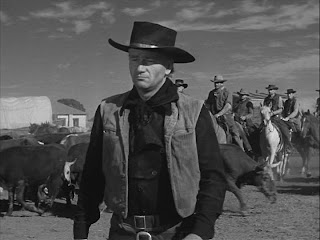
Shane’s mission is to settle down and find a place to stay. However, there becomes a settler conflict, which forces Shane to take action.
A loner, also known as Shane, comes across a nice family, the Starretts. The Starretts are homesteaders who want to farm the land. A three-day ride away from them are the ranchers. The Ryker brothers, also known as the ranchers, try to intimidate the homesteaders hoping they will leave what they believe to be their land. They do not want any farmers around, they just want to raise their cattle. However, the homesteaders are strong and won’t give in. Joe Starrett wants to build a life for his family, Marion and his son Joey on this land. Shane, who happens to be a gunslinger, befriends this family. Shane wants to settle down with the homesteaders however instead he gets into the middle of this tension between the homesteaders and the ranchers. A gunman killed one of the homesteaders, thus the tension kept increasing. So, Joe Starrett felt he had to do something, however instead Shane takes over and rides into town where he kills the Rykers and the gunman. Shane is a hero as he makes this western town safe again for all. He says goodbye to little Joey who looks up to Shane and then rides of into the distance…
Many critics believe that Shane is a masterpiece because of its simplicity and pure American style. The movie takes on stereotypes and embraces them. The characters’ appearances tell the audience exactly who they are. There is nothing shocking about the film, it is just straight to the point and takes on the truth. The film, Shane, sums of the West, such as individualism, initiative, persistence, lawlessness, violence and also racism. The entire movie encapsulates the West, which makes it such a well-known film in the Western genre.
No Shane. Please don’t come back…


















